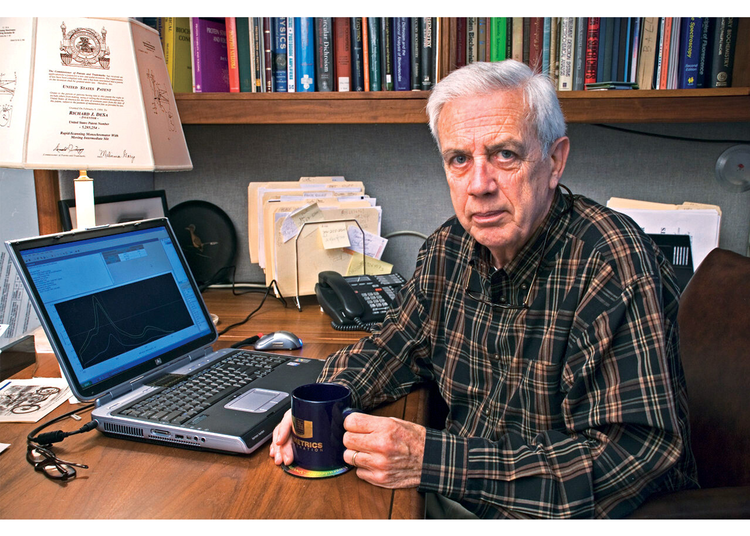The 6-Second Trick For Circularly Polarized Luminescence
The 6-Second Trick For Circularly Polarized Luminescence
Blog Article
The Only Guide for Uv/vis/nir
Table of ContentsExcitement About SpectrophotometersThe Definitive Guide for Uv/vis/nirMore About SpectrophotometersThe smart Trick of Uv/vis That Nobody is Talking AboutSee This Report on Circular Dichroism

Although spectrophotometry is most frequently used to ultraviolet, visible, and infrared radiation, contemporary spectrophotometers can question wide swaths of the electro-magnetic spectrum, consisting of x-ray, ultraviolet, visible, infrared, and/or microwave wavelengths. Spectrophotometry is a tool that depends upon the quantitative analysis of particles depending upon how much light is soaked up by colored compounds.
9 Simple Techniques For Circularly Polarized Luminescence
A spectrophotometer is frequently utilized for the measurement of transmittance or reflectance of solutions, transparent or opaque solids, such as polished glass, or gases. Although many biochemicals are colored, as in, they absorb visible light and therefore can be measured by colorimetric treatments, even colorless biochemicals can often be converted to colored substances suitable for chromogenic color-forming reactions to yield compounds appropriate for colorimetric analysis.: 65 Nevertheless, they can likewise be developed to measure the diffusivity on any of the noted light ranges that usually cover around 2002500 nm utilizing various controls and calibrations.
An example of an experiment in which spectrophotometry is utilized is the determination of the balance constant of a service. A specific chain reaction within a solution may take place in a forward and reverse direction, where reactants form products and products break down into reactants. Eventually, this chain reaction will reach a point of balance called a stability point.
The Uv/vis Diaries
The quantity of light that travels through the service is a sign of the concentration of certain chemicals that do not enable light to pass through. The absorption of light is because of the interaction of light with the electronic and vibrational modes of particles. Each kind of particle has a specific set of energy levels connected with the makeup of its chemical bonds and nuclei and therefore will take in light of specific wavelengths, or energies, leading to unique spectral properties.
They are widely used in lots of markets consisting of semiconductors, laser and optical production, printing and forensic evaluation, as well as in laboratories for the study of chemical compounds. Spectrophotometry is frequently utilized in measurements of enzyme activities, determinations of protein concentrations, determinations of enzymatic kinetic constants, and measurements of ligand binding reactions.: 65 Eventually, a spectrophotometer is able to identify, depending on the control or calibration, what compounds are Visit Your URL present in a target and exactly how much through estimations of observed wavelengths.
This would come as a service to the previously developed spectrophotometers which were not able to take in the ultraviolet correctly.
Spectrophotometers - An Overview
It would be discovered that this did not offer satisfactory results, for that reason in Design B, there was a shift from a glass to a quartz prism which permitted for much better absorbance outcomes - spectrophotometers (https://www.callupcontact.com/b/businessprofile/Olis_Clarity/8903776). From there, Model C was born with a modification to the wavelength resolution which ended up having three units of it produced
It irradiates the sample with polychromatic light which the sample absorbs depending on its properties. Then it is transferred back by grating the photodiode variety which detects the wavelength region of the spectrum. Since then, the development and execution of spectrophotometry devices has actually increased tremendously and has actually become one of the most ingenious instruments of our time.

Circularly Polarized Luminescence for Dummies
The grating can either be movable or repaired.
In such systems, the grating is fixed and the intensity of each wavelength of light is determined by a different detector in the variety. When making transmission measurements, the spectrophotometer quantitatively compares the portion of light that passes through a reference service and a test service, then electronically compares the intensities of the two signals and calculates the percentage of transmission of the sample compared to the recommendation requirement.

Report this page